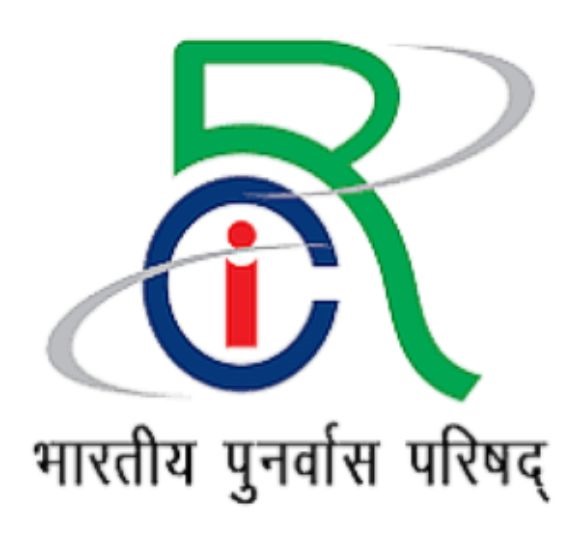ORTHOSES
An orthosis is a medical device that support, corrects, or protects a body part. They are also known as braces, calipers, or splints.
- Orthotics is a medical specialty that focuses on the design and application of orthoses.
- An orthotist is a person who is trained to properly fit and fabricate orthoses.
How prostheses are used
- Spinal orthoses: Used to correct and support the spine
- Helmet orthosis: Used to mold a baby’s skull into shape
- Foot orthoses: Used to reduce pain in cases of tibialis posterior tendon dysfunction
- Finger orthoses: Used to align the joints of affected fingers to promote healing and increase function
- Best Orthoses Near Me | Protheses & Orthoses 9321110091
An AFO (Ankle Foot Orthosis) is a medical device designed to provide support, stability, and alignment to the foot and ankle. It is commonly used for individuals with various conditions that affect foot and ankle function, such as neurological or musculoskeletal disorders. The AFO helps in managing conditions like foot drop, spasticity, and weakness, and can aid in improving mobility and posture.
Here are some key details about AFOs used for foot correction:
1. Purpose and Function:
- Stability and Support: An AFO helps stabilize the ankle joint, preventing abnormal foot positioning or collapse. It assists individuals who have difficulty controlling their foot movements due to weakness, paralysis, or spasticity.
- Foot Drop Correction: AFOs are frequently used to manage foot drop, where the foot cannot lift during walking. This condition is often seen in stroke patients, people with multiple sclerosis, or those with nerve damage.
- Alignment: It helps in maintaining proper alignment of the foot and ankle, ensuring the correct position during walking or standing.
2. Types of AFOs:
- Custom-Made AFO: These are designed specifically for the patient after taking a cast or digital impression of their foot and leg. They offer a better fit, comfort, and personalized correction.
- Pre-fabricated AFO: These are off-the-shelf devices that are adjustable to fit a range of patients, though they might not provide the same level of precision as custom AFOs.
- Dynamic AFO: These are designed to allow a certain range of motion, providing more flexibility while still offering support.
- Rigid AFO: These offer more structural support and restrict movement to maintain proper alignment.
- Posterior Leaf Spring AFO (PLS): These are designed to help with foot drop and provide flexibility while ensuring the foot stays in a neutral position during walking.
Why Choose Orthoses


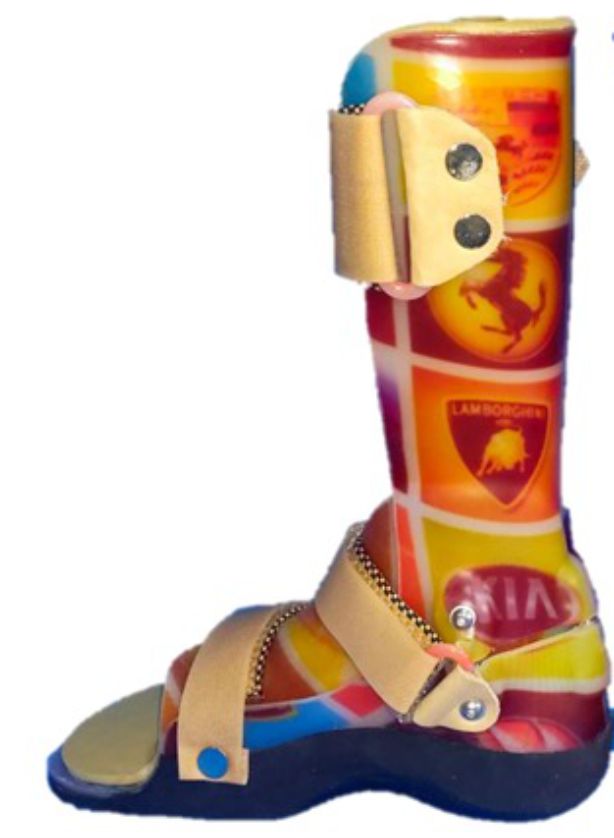
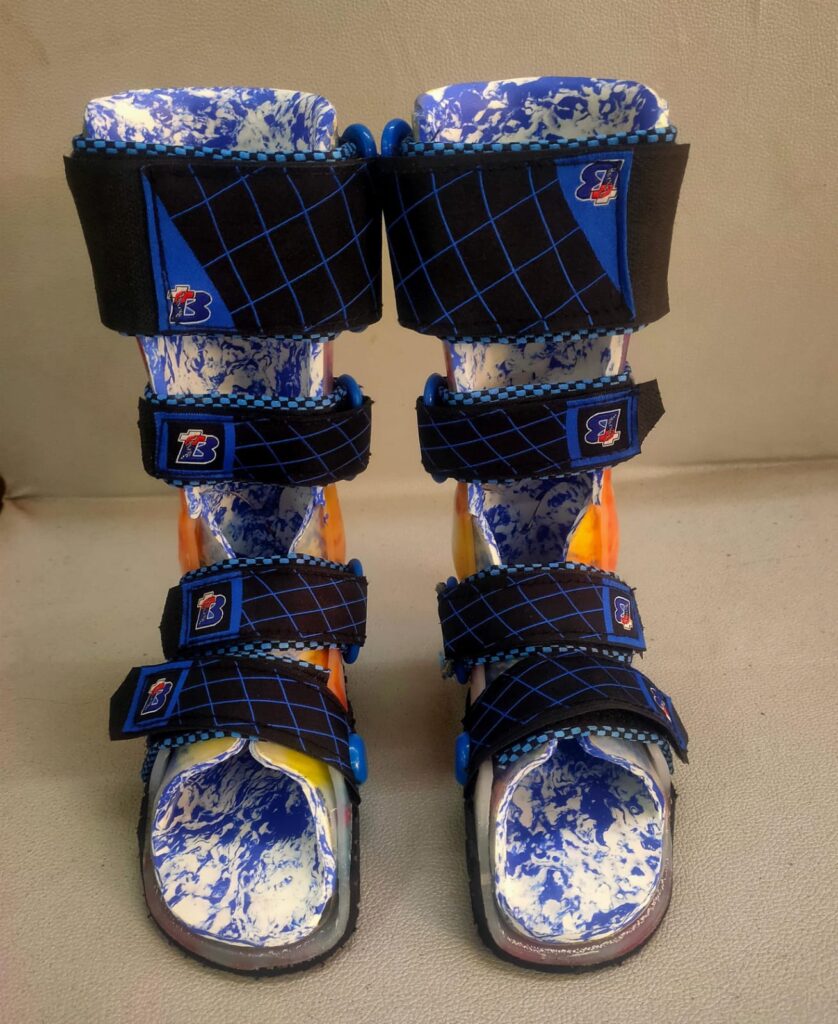
Choosing orthoses (or orthotic devices) can offer several benefits, depending on your specific needs. Here are some reasons why people opt for them:
Pain Relief: Orthoses can help alleviate pain caused by conditions like arthritis, plantar fasciitis, or flat feet. They support the affected area and reduce pressure on painful spots.
Improved Mobility: They can enhance movement by correcting misalignments and improving function. For example, in conditions like foot drop, orthoses help improve walking patterns.
Postural Support: Some orthoses, like back or neck braces, provide posture correction and support, reducing strain on muscles and joints.
Prevention of Further Injury: For people with conditions that predispose them to injury, such as weakened joints or bones, orthoses can help prevent worsening by providing stability and support.
Rehabilitation: After surgery or injury, orthoses can assist in the recovery process by offering support, aiding in proper movement, and preventing further stress on healing tissues.
Correcting Deformities: In cases like scoliosis or bunions, orthotic devices can help reduce the progression of deformities and can sometimes even improve the condition over time.
Personalized Fit: Orthoses are often custom-made or adjusted to fit an individual’s specific anatomy, which maximizes comfort and effectiveness.
Enhanced Performance: For athletes or active individuals, orthoses can improve performance by optimizing alignment and function, reducing fatigue, and providing cushioning.
How Orthoses Improve Quality of Life
Orthoses are devices designed to support, align, or correct deformities and improve the function of a part of the body, typically the joints, bones, or muscles. They can significantly improve the quality of life for individuals with various conditions. Here’s how:
1. Pain Relief
Orthoses can reduce or eliminate pain by redistributing pressure from sensitive or inflamed areas. For individuals with conditions like arthritis, tendonitis, or chronic back pain, wearing the right orthotic device can provide significant relief and reduce the need for pain medications.
2. Improved Mobility
Many orthoses, such as braces, splints, or shoe inserts, are designed to improve mobility. By providing support to weakened or damaged areas (e.g., ankles, knees, or hips), orthoses help individuals maintain or regain their ability to move with less discomfort or restriction.
3. Prevention of Further Injury
Orthoses can help protect injured or vulnerable areas of the body, preventing further damage or strain. For instance, knee braces can help prevent worsening of ligament injuries, and ankle foot orthoses (AFOs) can prevent the risk of falls in individuals with foot drop.
4. Enhanced Posture and Alignment
Orthoses like back braces or neck supports can help correct poor posture and misalignments in the spine. By improving body alignment, they can reduce strain on muscles and joints, preventing chronic pain and other complications associated with poor posture.
5. Increased Independence
Orthoses can help individuals with disabilities or mobility challenges regain independence. For example, prosthetic limbs and custom-fitted orthotics for feet or hands can enable people to carry out daily activities with greater ease and confidence.
6. Better Functionality and Efficiency
Devices like hand splints or finger orthoses improve hand function for people with conditions like stroke or arthritis, making it easier to perform tasks such as writing, eating, or using a smartphone. This functional improvement can contribute to a sense of normalcy and self-sufficiency.
7. Customizable Support
Orthoses are highly customizable, which allows them to be tailored to each individual’s specific needs. Whether for someone with a sports injury, a chronic condition, or a congenital issue, custom orthoses can provide the ideal support and comfort to optimize daily functioning.
8. Psychological Benefits
By reducing pain, improving mobility, and increasing independence, orthoses often lead to better mental health and overall well-being. Individuals may experience greater confidence, less frustration, and an improved sense of control over their daily lives.
9. Improved Sleep Quality
For people with musculoskeletal pain or conditions like plantar fasciitis or carpal tunnel syndrome, orthotic devices can reduce nighttime pain, allowing for better quality sleep, which in turn boosts overall health and vitality.
In summary, orthoses enhance quality of life by improving physical function, providing pain relief, preventing further injury, and promoting greater independence. By tailoring these devices to the specific needs of individuals, they can have a profound impact on physical health and well-being.
Orthoses Support
An orthosis provides support and protection for joints or parts of the body. It can optimally align a joint into a better functional position, whether it be the position of a hand or an elbow or a knee or a foot. It is often used to reduce pain. A good orthosis can also maintain a functional position with the joint and we can use an orthosis either dynamically or statically to achieve this functional position.
Orthoses fitting is the process of selecting, customizing, and adjusting orthotic devices to provide proper support, alignment, and function for a patient’s body. Orthoses can be used for various body parts, including the feet, ankles, knees, spine, and upper limbs, to assist with mobility, correct deformities, relieve pain, or prevent further injury.


Prosthetics
Prosthetics refers to the design, creation, and use of artificial limbs or body parts to restore mobility and functionality for individuals who have lost a limb due to injury, disease, or congenital conditions. Modern prosthetic devices are made using advanced materials like carbon fiber, silicone, and titanium, ensuring durability, flexibility, and a natural appearance. Technological advancements, such as bionic prosthetics and 3D printing, have significantly improved their functionality, allowing for better movement and comfort. These devices not only enhance physical capabilities but also improve the overall quality of life by restoring independence and confidence.
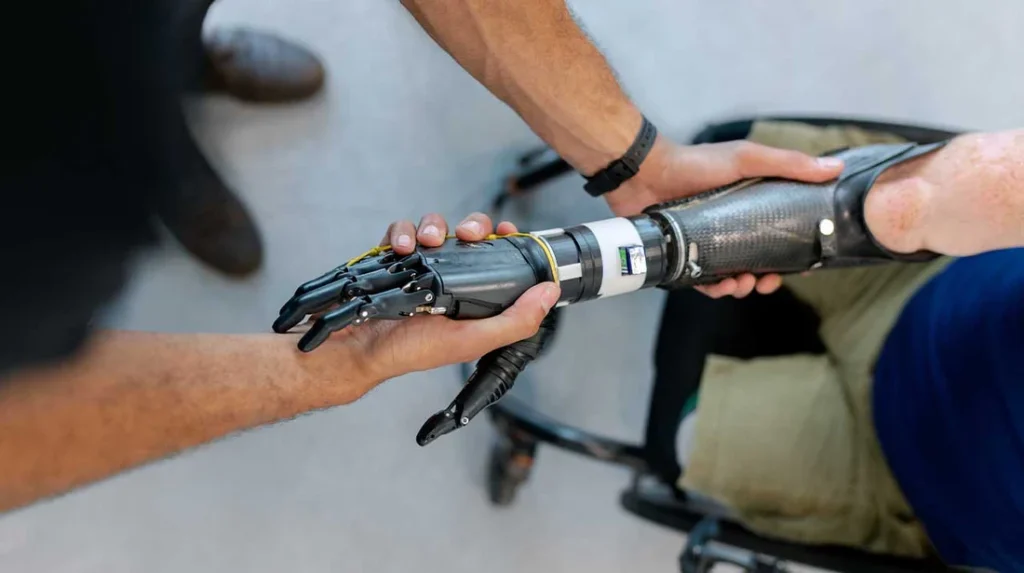
Upper Extremity
The upper extremity refers to the region of the human body that includes the shoulder, arm, forearm, wrist, and hand. It plays a crucial role in performing various daily activities, from lifting and carrying objects to fine motor tasks like writing and typing. The upper extremity consists of bones such as the humerus, radius, and ulna, along with muscles, joints, tendons, and nerves that enable movement and dexterity. Injuries or conditions affecting the upper extremity, such as fractures, arthritis, or nerve damage, can significantly impact mobility and functionality. Medical interventions, including physical therapy, surgery, and prosthetics, help restore strength and movement in cases of impairment.

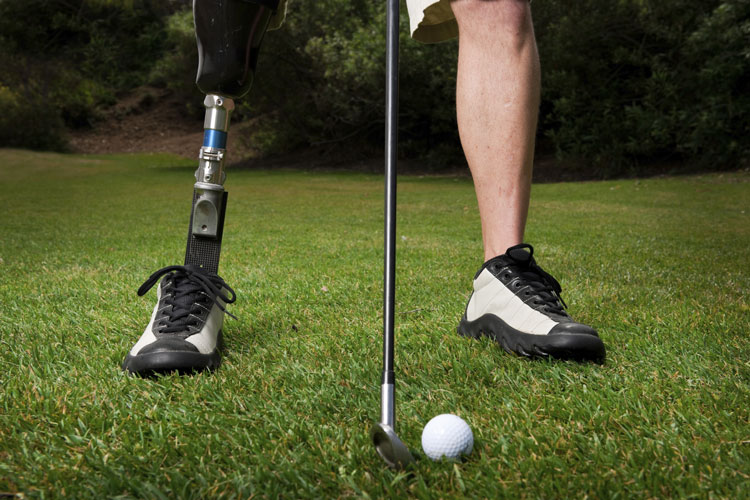
Lower Extremity
The lower extremity refers to the part of the human body that includes the hip, thigh, knee, leg, ankle, and foot. It is essential for weight-bearing, balance, and movement, enabling activities like walking, running, and jumping. The lower extremity consists of major bones such as the femur, tibia, and fibula, along with muscles, ligaments, tendons, and joints that provide strength and flexibility. Injuries or conditions affecting the lower extremity, such as fractures, arthritis, or nerve damage, can severely impact mobility and quality of life. Medical treatments, including physical therapy, surgery, and prosthetics, help restore function and improve movement in cases of impairment.

Silicon Prosthesis
Silicone prosthesis is a type of custom-made artificial body part designed to replace missing limbs, fingers, toes, or facial features with a lifelike appearance and texture. Made from medical-grade silicone, these prosthetics closely mimic natural skin in color, texture, and flexibility, providing both functional and aesthetic benefits. They are commonly used in cases of amputations, congenital deformities, or trauma-related injuries. Silicone prostheses offer comfort, durability, and water resistance, allowing users to carry out daily activities with ease. Advanced techniques, such as color matching and embedded details like veins and fingerprints, enhance realism, boosting the confidence and quality of life of individuals who use them.

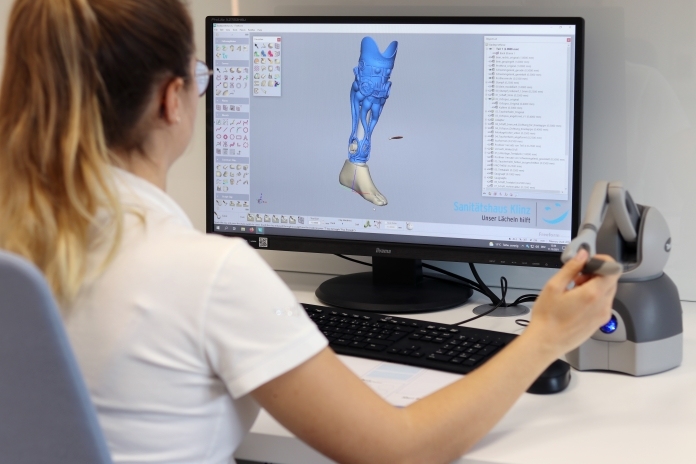
3D Scanning Prosthesis
3D scanning prosthesis is an advanced technology that uses high-precision 3D scanning to create customized prosthetic limbs and body parts with exceptional accuracy. This process captures detailed measurements of the residual limb or affected area, ensuring a perfect fit and enhanced comfort for the user. By eliminating traditional molding techniques, 3D scanning significantly reduces the time required for prosthesis fabrication while improving precision and design efficiency. Combined with 3D printing, this technology allows for lightweight, durable, and highly functional prosthetics tailored to individual needs. It has revolutionized the field of prosthetics by making high-quality, affordable, and personalized solutions more accessible to amputees and individuals with limb differences.

Orthotics
Orthotic prosthesis refers to a specialized medical device that combines elements of both orthotics and prosthetics to support, correct, or replace a missing or impaired limb. Orthotic devices, such as braces and supports, help stabilize and improve the function of weakened or deformed limbs, while prosthetic components replace lost body parts to restore mobility. This hybrid approach is particularly beneficial for individuals with conditions like partial amputations, neuromuscular disorders, or joint instability. Advanced materials like carbon fiber, silicone, and 3D-printed components enhance durability, comfort, and functionality. Orthotic prostheses improve mobility, reduce pain, and enhance the overall quality of life by providing tailored support and movement assistance.


Accolades
Accolades prosthesis refers to high-quality, innovative prosthetic solutions that have been recognized for their excellence in design, functionality, and user comfort. These prosthetic devices are developed using cutting-edge technologies, such as 3D printing, advanced biomechanics, and bionic enhancements, to provide superior mobility and adaptability. Many accolade-winning prostheses focus on improving the lives of amputees by offering lightweight, durable, and highly customized designs that closely mimic natural limb movement. Recognized by medical professionals and industry experts, these prosthetic advancements contribute significantly to rehabilitation, independence, and confidence for users, setting new standards in prosthetic care and technology.

Podiascan
Podiascan prosthesis is an advanced prosthetic solution that utilizes podiascan technology to assess foot pressure distribution and gait patterns for individuals with lower limb impairments. This technique involves scanning the foot to analyze weight distribution, arch structure, and pressure points, ensuring a highly customized prosthetic design for optimal comfort and functionality. By using podiascan data, prosthetists can create well-fitted prosthetic feet or orthotic supports that enhance mobility, reduce strain, and prevent complications such as pressure sores or misalignment. This technology is particularly beneficial for individuals with diabetes, limb loss, or orthopedic conditions, as it helps improve balance, posture, and overall movement efficiency.



